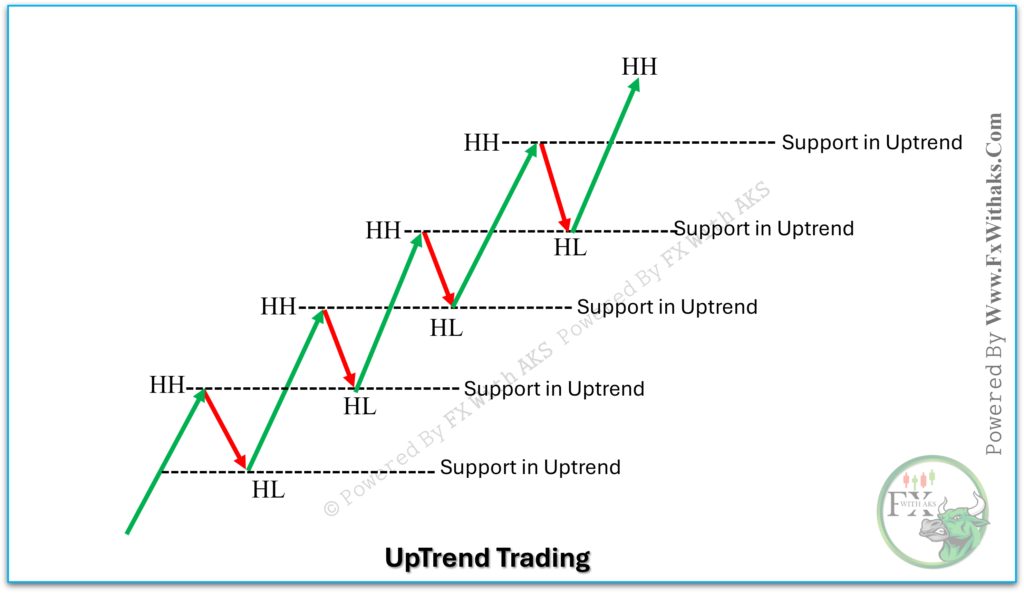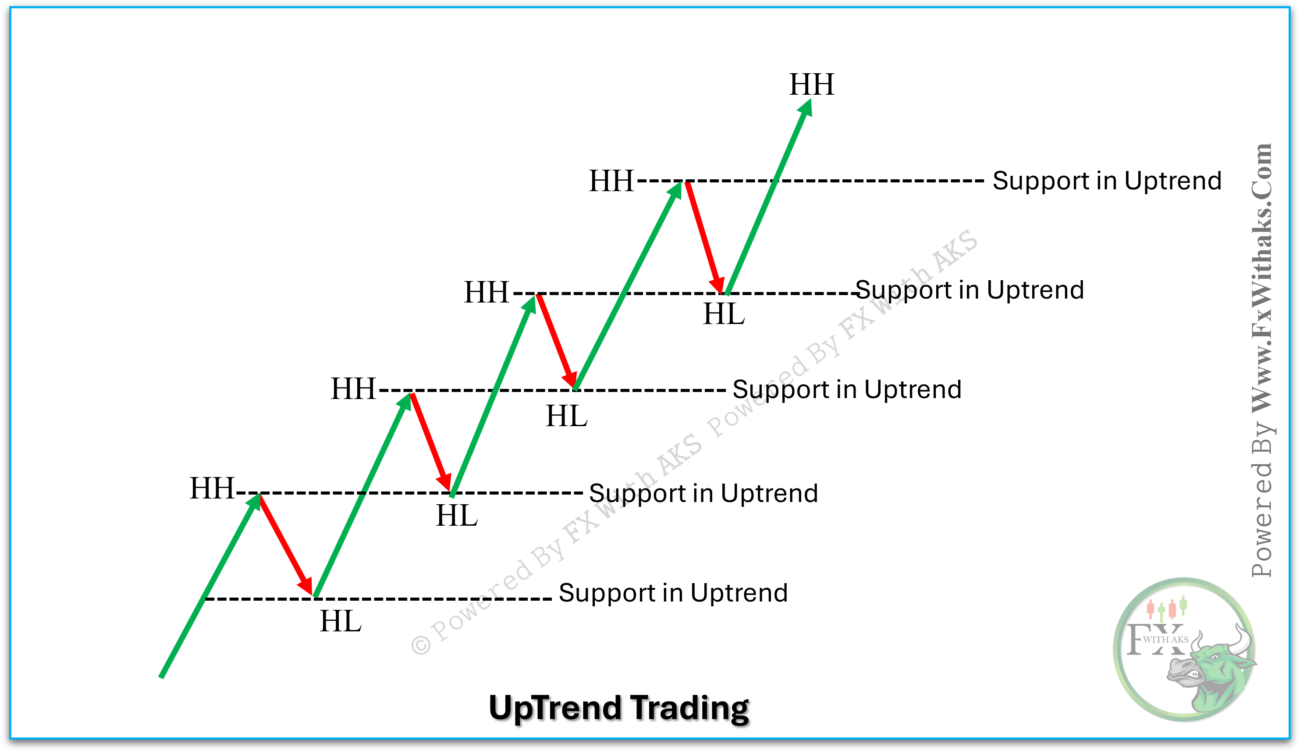Uptrend trading refers to a strategy used in financial markets where traders seek to buy (go long on) assets that are experiencing a sustained upward movement in price. The goal is to profit from rising prices by identifying and riding the trend until there are signs of reversal or weakening momentum.
🔍 Key Characteristics of an Uptrend
An uptrend is generally defined by:
- Higher highs and higher lows
- Rising moving averages (e.g., 50-day or 200-day MA)
- Bullish candlestick patterns (e.g., engulfing, hammer)
- Volume confirmation (increased volume on up moves)
📈 How to Trade an Uptrend
1. Identify the Uptrend
Use tools like:
- Trendlines: Drawn along higher lows.
- Moving Averages: Price consistently above MA (e.g., 50-day EMA).
- Technical Indicators: MACD, RSI (staying above 50 suggests bullish strength).
2. Enter the Trade
Look for entry points such as:
- Pullbacks to support (e.g., to a moving average or a trendline)
- Breakouts above resistance
- Bullish chart patterns: Flags, pennants, ascending triangles
3. Set Stop-Loss
To manage risk:
- Place below the recent swing low
- Or below a key support level or moving average
4. Set Take-Profit Targets
- Use Fibonacci extensions
- Previous resistance zones
- Or trail stops as the price rises

🔧 Useful Tools & Indicators
| Tool/Indicator | Use |
|---|---|
| Moving Averages (MA/EMA) | Trend direction and support |
| RSI | Overbought/oversold levels |
| MACD | Trend strength and momentum |
| Volume | Confirm price movement |
| Trendlines | Support and resistance |
⚠️ Tips for Trading Uptrends
- Trade with the trend—avoid shorting during strong uptrends.
- Watch for divergence (e.g., price up, RSI down) which could signal weakening.
- Stay updated on news or earnings, which can impact trends.
- Use position sizing and risk management to protect capital.
Would you like an example of a trade setup, or help analyzing a chart to identify an uptrend?

